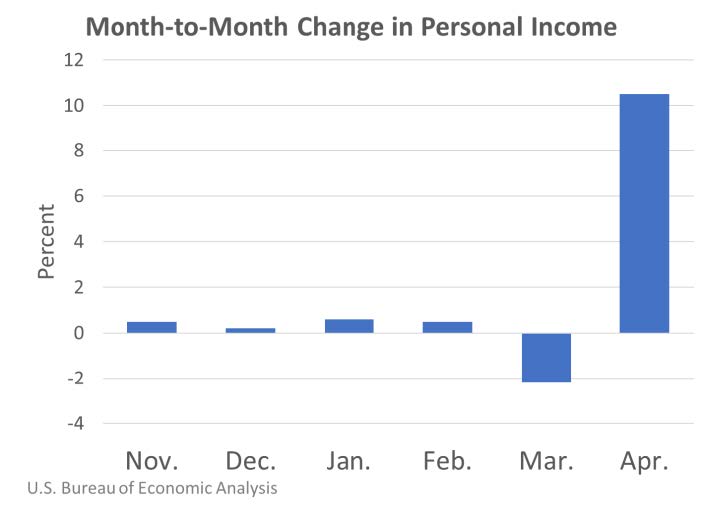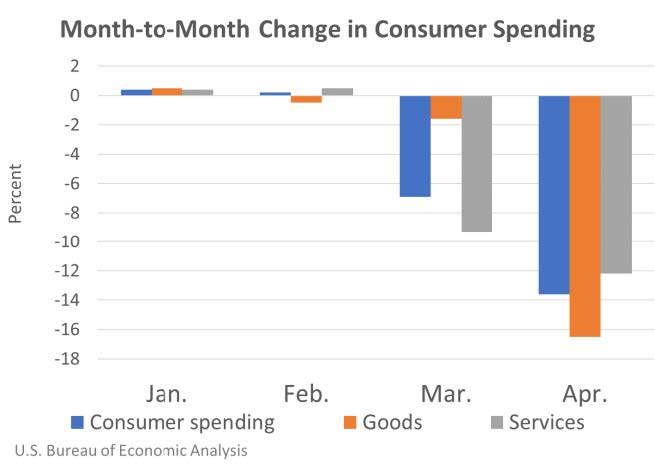Personal income increased 10.5 percent (monthly rate) in April according to estimates released today by the Bureau of Economic Analysis. Disposable personal income increased 12.9 percent and consumer spending decreased 13.6 percent.
Personal income
The increase in April personal income reflected an increase in government social benefits that more than offset decreases in most other sources of personal income. Within government social benefits, an increase in “other” benefits primarily reflected one-time Economic Impact Payments. For more information, see “How are the economic impact payments for individuals authorized by the CARES Act of 2020 recorded in the NIPAs?”.
Also within government social benefits, unemployment insurance (UI) benefits increased, reflecting an increase in unemployment claims based on data from the Department of Labor’s Employment and Training Administration. The April UI estimate includes the impacts of an expansion of the UI program; for more information, see “How will the expansion of unemployment benefits in response to the COVID-19 pandemic be recorded in the NIPAs?”. A breakout of the expanded benefits, as well as additional factors affecting monthly personal income can be found on the Effects of Selected Federal Pandemic Response Programs on Personal Income table.
Consumer spending
Consumer spending decreased in April, reflecting decreases in both goods and services.
- Within goods, the leading contributor to the decrease was spending on food and beverages reflecting Census Bureau Monthly Retail Trade Survey (MRTS) data. Spending on prescription drugs also decreased reflecting Intercontinental Marketing Services Health data on prescription drug sales.
- Within services, the leading contributor to the decrease was spending on health care, based primarily on employment, hours, and earnings data from the Bureau of Labor Statistics Current Employment Statistics report as well as credit card data. Other contributors to the decrease in services were spending on food services and accommodations, based on Census MRTS data and Smith Travel Research data.
For more information, read the full report.

